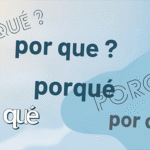1 – Gender Agreement in Spanish:
In Spanish, nouns are not neutral; they carry gender, either masculine or feminine, impacting the words surrounding them. Let’s explore this further:
Masculine Nouns in Spanish:
- Masculine nouns often end in -o, -e, or a consonant. This includes occupations and objects traditionally associated with masculinity:
| Masculine Nouns | English |
|---|---|
| el chico | the boy |
| el libro | the book |
| el coche | the car |
- It’s important to note that nouns denoting male beings or objects are usually masculine.
Feminine Nouns in Spanish:
- Feminine nouns, on the other hand, often end in -a or -ión, encompassing entities traditionally associated with femininity:
| Feminine nouns | English |
| la chica | the girl |
| la casa | the house |
| la canción | the song |
- Nouns denoting female beings or objects are generally feminine.
3. Exceptions:
While many nouns follow gender patterns, there are exceptions where the ending doesn’t strictly determine gender:
Masculine Nouns Ending in -a:
While most nouns ending in -a are feminine, some are exceptions and are masculine:
| Exception | Gender |
| el día | masculine |
| el poema | masculine |
| el sistema | masculine |
Feminine Nouns Ending in -o:
While most nouns ending in -o are masculine, some exceptions are feminine:
| Exception | Gender |
| la mano | feminine |
| la foto | feminine |
| la radio | feminine |
Masculine Nouns Ending in -ión:
Nouns ending in -ión, typically feminine, have exceptions that are masculine:
| Exception | Gender |
| el camión | masculine |
| el avión | masculine |
| el corazón | masculine |
Feminine Nouns Ending in Consonants:
While most nouns ending in consonants are masculine, some exceptions are feminine:
| Exception | Correct Gender |
| la flor | feminine |
| la piel | feminine |
| la salud | feminine |
2- Number Agreement in Spanish:
When talking about one item, like a book, everything in the sentence, from the noun to the adjective, stays singular. For example:
Examples:
- Singular: el libro interesante (the interesting book)
- Singular: una casa grande (a big house)
Now, imagine discussing multiple items, like a collection of books. Number agreement ensures that everything in the sentence adjusts to plural forms.
Examples:
- Plural: los libros interesantes (the interesting books)
- Plural: unas casas grandes (some big houses)
Forming Plural Nouns
Forming plurals in Spanish involves a few straightforward rules. If a noun ends in a vowel, you add -s to make it plural.
Examples:
- Singular: el chico (the boy)
- Plural: los chicos (the boys)
If a noun ends in a consonant, you generally add -es.
Examples:
- Singular: el día (the day)
- Plural: los días (the days)
There’s a unique case for nouns ending in -z; they change to -ces in the plural form.
Examples:
- Singular: la vez (the time)
- Plural: las veces (the times)
Agreement with Articles and Adjectives
In the language symphony, articles (like “the”) and adjectives (words that describe nouns) play crucial roles. They adapt to the number of the nouns they accompany.
Examples:
- Singular: el libro interesante (the interesting book)
- Plural: los libros interesantes (the interesting books)
Adjective Endings
Adjectives, the paintbrushes of language, add color and detail to descriptions. Their endings change to match the gender and number of the nouns they modify.
Examples:
| masculine | feminine | ||
| singular | un chico interesante (an interesting boy) | una chica interesante (an interesting girl) | |
| plural | unos chicos interesantes (some interesting boys) | unas chicas interesantes (some interesting girls) |
Spanish Gender & Number Agreement Quiz
Spanish Gender & Number Agreement Quiz
Test your knowledge of Spanish grammar with this 15-question quiz! Choose the correct answer, then click “Check Answers” to see explanations.
Correct Answer: B) La casa blanca
Explanation: “Casa” is feminine singular, so it requires the feminine singular article “la” and adjective “blanca.”
Correct Answer: C) Los libros interesantes
Explanation: Both the noun “libro” and adjective “interesante” must be pluralized to match.
Correct Answer: C) inteligentes
Explanation: “Mujeres” is feminine plural, but “inteligente” is the same for both genders – only the plural -s is needed.
Correct Answer: B) Unas chicas altas
Explanation: “Unas” matches feminine plural “chicas,” and “altas” agrees in gender and number.
Correct Answer: C) Los zapatos rojos
Explanation: “Zapatos” is masculine plural, requiring “los” and the masculine plural adjective “rojos.”
Correct Answer: B) Unos
Explanation: “Problemas” is masculine plural, so it requires the masculine plural indefinite article “unos.”
Correct Answer: A) flor
Explanation: The singular feminine article “la” requires a singular feminine noun (“flor”).
Correct Answer: C) Ella es una buena amiga
Explanation: All elements must be feminine singular: “una” (article), “buena” (adjective), and “amiga” (noun).
Correct Answer: B) los exámenes difíciles
Explanation: “Examen” becomes “exámenes” in plural (note accent change), and both article and adjective must be masculine plural.
Correct Answer: D) La problema difícil
Explanation: “Problema” is a masculine noun despite ending in -a, so it should be “el problema.”
Correct Answer: A) Los – nuevos
Explanation: “Estudiantes” is masculine plural when referring to a mixed group, requiring masculine plural articles and adjectives.
Correct Answer: A) Unos días felices
Explanation: “Días” is masculine plural, requiring “unos” and the masculine plural adjective “felices.”
Correct Answer: A) La mano pequeña
Explanation: “Mano” is feminine despite ending in -o, so it takes feminine articles and adjectives.
Correct Answer: A) Las – populares
Explanation: “Canciones” is feminine plural, requiring the feminine plural article “las” and adjective “populares.”
Correct Answer: D) Las hombre trabajadores
Explanation: “Hombre” is masculine, so it should be “los hombres trabajadores.” The other options show correct agreement.

